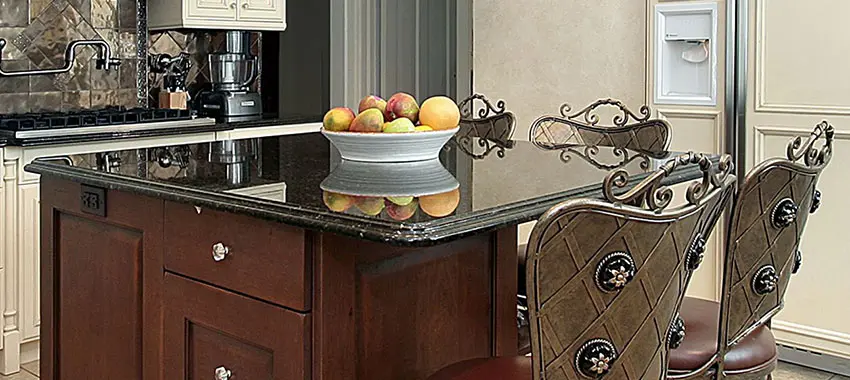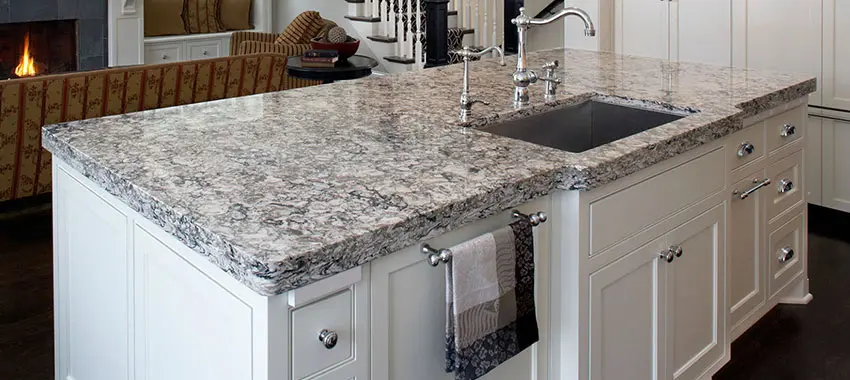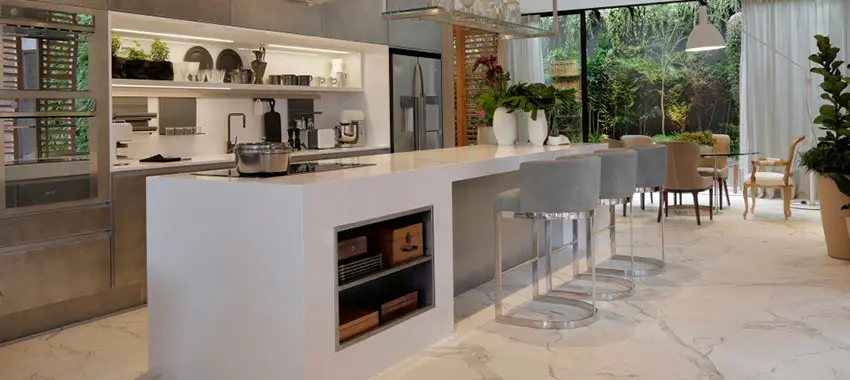Nov
When To Replace Your Limestone Countertops? 10 Signs
- 2024
- FlintStoneTops
Natural stones are the most common materials people go for when they’re opting for countertops. While marble and granite countertops remain the most popular choices, many people also choose limestone countertops. So, if you have limestone countertops for some time now, then you need to know these signs that indicate your should replace them.
Signs To Replace Limestone Countertops
The Countertops Are Chipped
The first sign you need to look out for, when you’re on the fence about changing your limestone countertops, is to look for cracks and chips. But these are not normal chips or cracks you’re concerned about. You need to look for those big, very obvious scratches and deep cuts on the surface of the countertops.
A lot of the time, hairline cracks and chips can be fixed and they’re no biggie, but what can’t be reversed is the very deep indentation in the countertops that can’t be filled or even fixed to make the countertops look better. How do these cracks happen, you ask? Well, there can be a couple of reasons why that happens.
Firstly, you might have dropped something on the countertops from a reasonable height. If that’s not the case, then maybe you’re using the countertops as a cutting board and the constant cutting of things on the countertops has led to scratches.
They Have Too Many Stains
One or two stains are not the end of the world. But what you should do if your entire countertop surface is covered and littered with stains? This is not a pretty sight at all and it can be really bad for your countertops.
You need to somehow clean the stains first, but chances are that they’re already quite permanent and they’re not going anywhere. So, if that’s the condition of your countertops, then maybe it’s best to replace them before things get too ugly. If stains have been there for a long time, then you probably need to get new countertops.
There Are Uneven Ridges
If you run your hand on the surface of the countertops, you will mostly feel smoothness and that’s a good sign. But when you start to notice bumps on the countertops and you can even see them with your own eyes then that is not ideal at all. If there are sizable divots or craters on the countertop surface, then that’s going to be a hard thing to fix.
This is why you should change the countertops before it is too late, because holes in the countertops is not a good look and you don’t want to sport these countertops in your kitchen.
The Color Is Faded
Any type of countertop gets old when the color starts to fade. This is a huge sign that you need to look out for. If your countertops are very old, then you might want to see the color of your slabs too.
Chances are that they will be extremely faded and the places you use a lot will be more lighter and dim in appearance than other unused places, so that is how you can compare. Sometimes, if you use abrasive and harsh chemical cleaners on limestone countertops, the same thing can happen. So, you should change the countertops, because they don’t look good. However, if you want to keep the countertops for a bit more, refresh your old countertops.
The Damage Is Irreversible
Sometimes, you can fix the countertops be it a small scratch or a chip on the edge. However, other times, the damage is just too far gone. You can’t fix some things when it comes to a natural stone countertop, so the best thing to do in this case? Replace the countertops.
Whether it’s a chemical stain, a blister from heat, or anything else that is at the point of no return, then you need to replace the countertops, because it will stick out like a sore thumb.
Are You Remodeling Your Kitchen?
Most people don’t even change their countertops, but 9 times out of 10, the best bet to change them can be when you’re remodeling or renovating the kitchen. This is something that a lot of people do because it’s like getting done with two things at once.
You’re getting some work done in the kitchen, so you might as well change the countertops too while you’re at it. So, if you see any damage on your limestone countertops and it’s been a while since you changed them, well, now is the perfect time to do so.
It’s Been More Than A Decade
Limestone countertops last for a long time if you take care of them, but there is also a time after which you have no choice but to change your countertops. If you’ve had your countertops for more than 10 years now, the aging will show on the countertops.
They won’t be as clean. They will be faded, splotchy, and just overall not in the best condition. This is why you want to change the countertops after the 10–15-year mark. This is going to ensure that your countertops as well as your kitchen stay in good condition for longer.
Countertops Look Outdated
There is a huge difference between old and outdated. Old countertops are, well, old. They don’t look brand new, they’re not as bright and vibrant anymore and they just look worn. Well, outdated countertops, on the other side of things, look out of place.
There are classic and timeless countertops, but then there are some designs that don’t look up to date at all. So, if your countertops look outdated, it’s because they’ve run their share in the trend marathon and now it’s time for something new. So, get new and classic countertops that will never go out of style.
You’re Selling Your House
Changing your countertops because you’re selling your house? Shouldn’t it be the other way around? Well, not exactly. You should look for natural stones because they are great when it comes to return on investment and they’re sought-after when it comes to potential buyers who are interested in your house.
So, if you’re looking for a good deal on your house, you need to change your countertops into something that is very much loved by people. Granite and marble are great choices when it comes to natural stone. Moreover, quartz is an excellent engineered stone. Buyers will flock around your house to seal the deal.
You Need More Space
You might be changing up your kitchen for an entirely different reason. You might want to free up some space by removing the countertops and maybe changing the layout a bit. Well, that is when you can change the countertops altogether too.
This is something that a lot of people do and it’s refreshing for a change. So, if you want to change the look of the kitchen and elevate the space of the countertops, then change the material too while you’re at it. It will look even better.
Conclusion
Limestone countertops usually last for a decent amount of time, given that you maintain them properly, but that doesn’t mean that they don’t need to be replaced. Well, now you know the signs to look out for. If your limestone countertops didn’t last as long as you expected, you should consider more durable materials like granite. Get in touch with granite contractors Potomac to take a look at various granite grades, colors and patterns.











